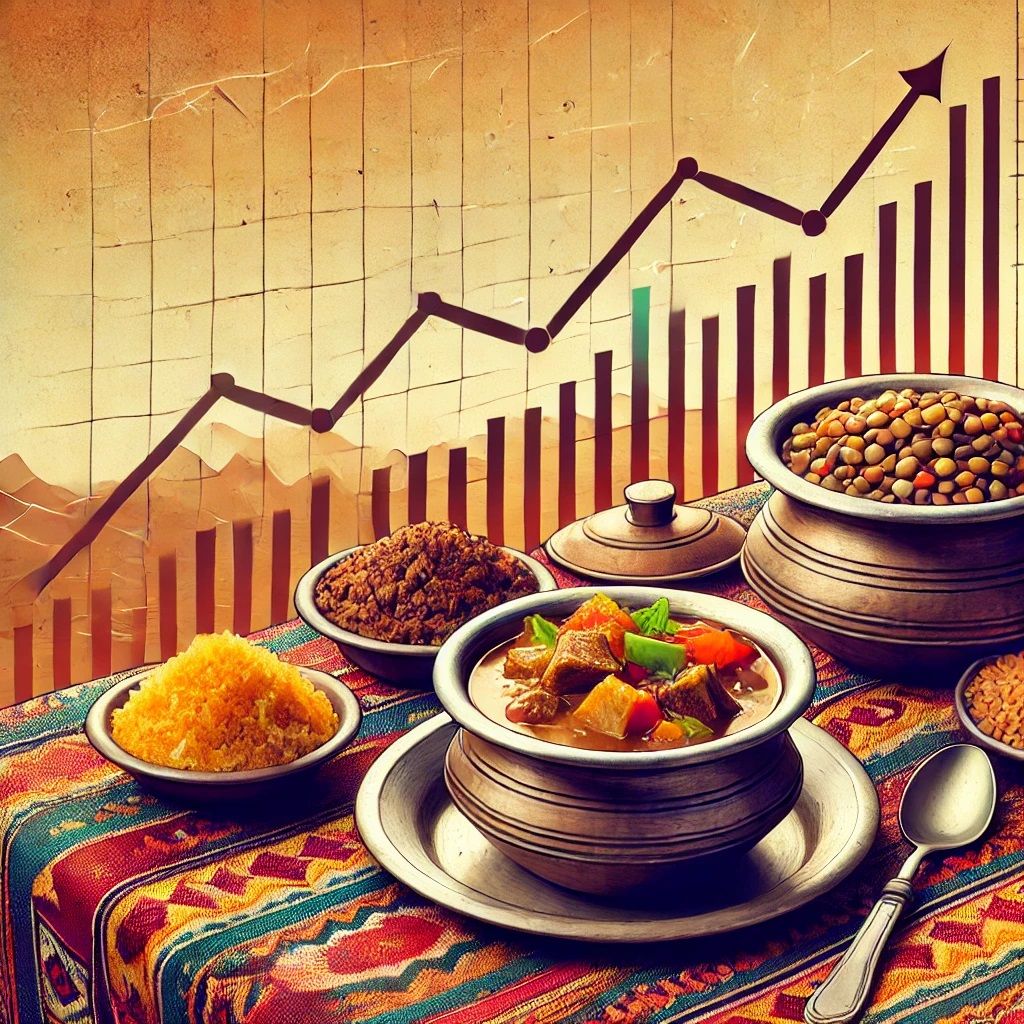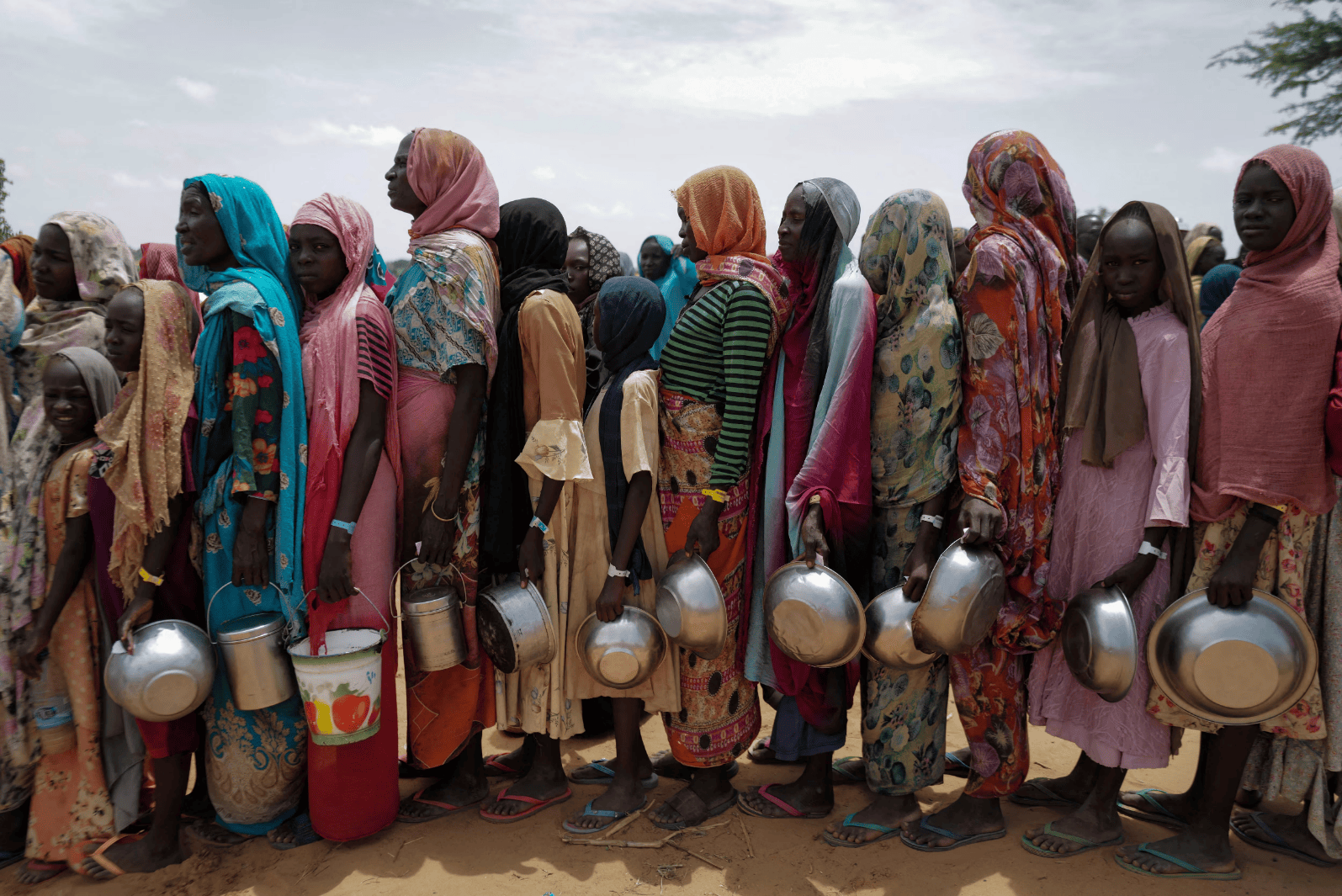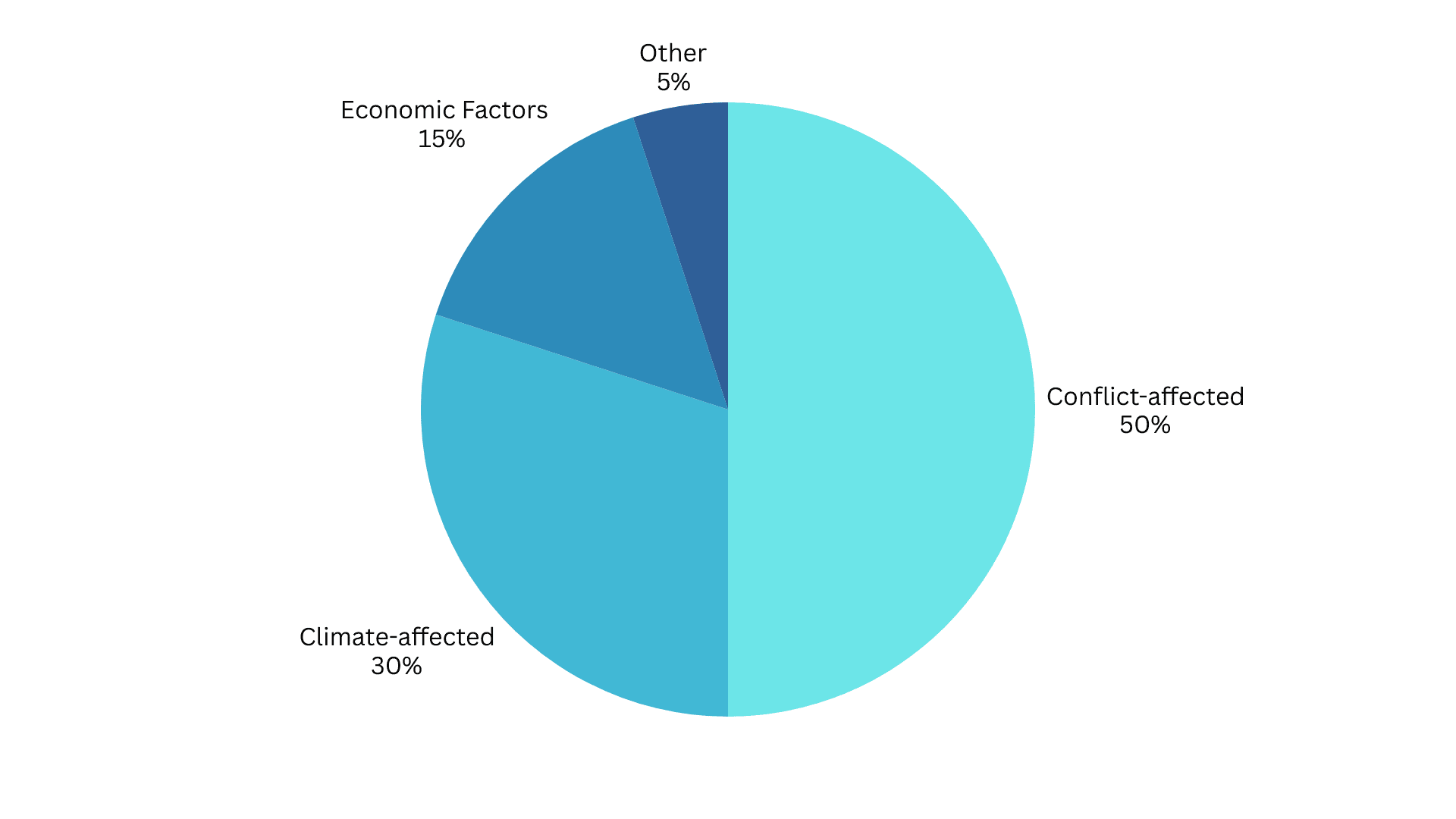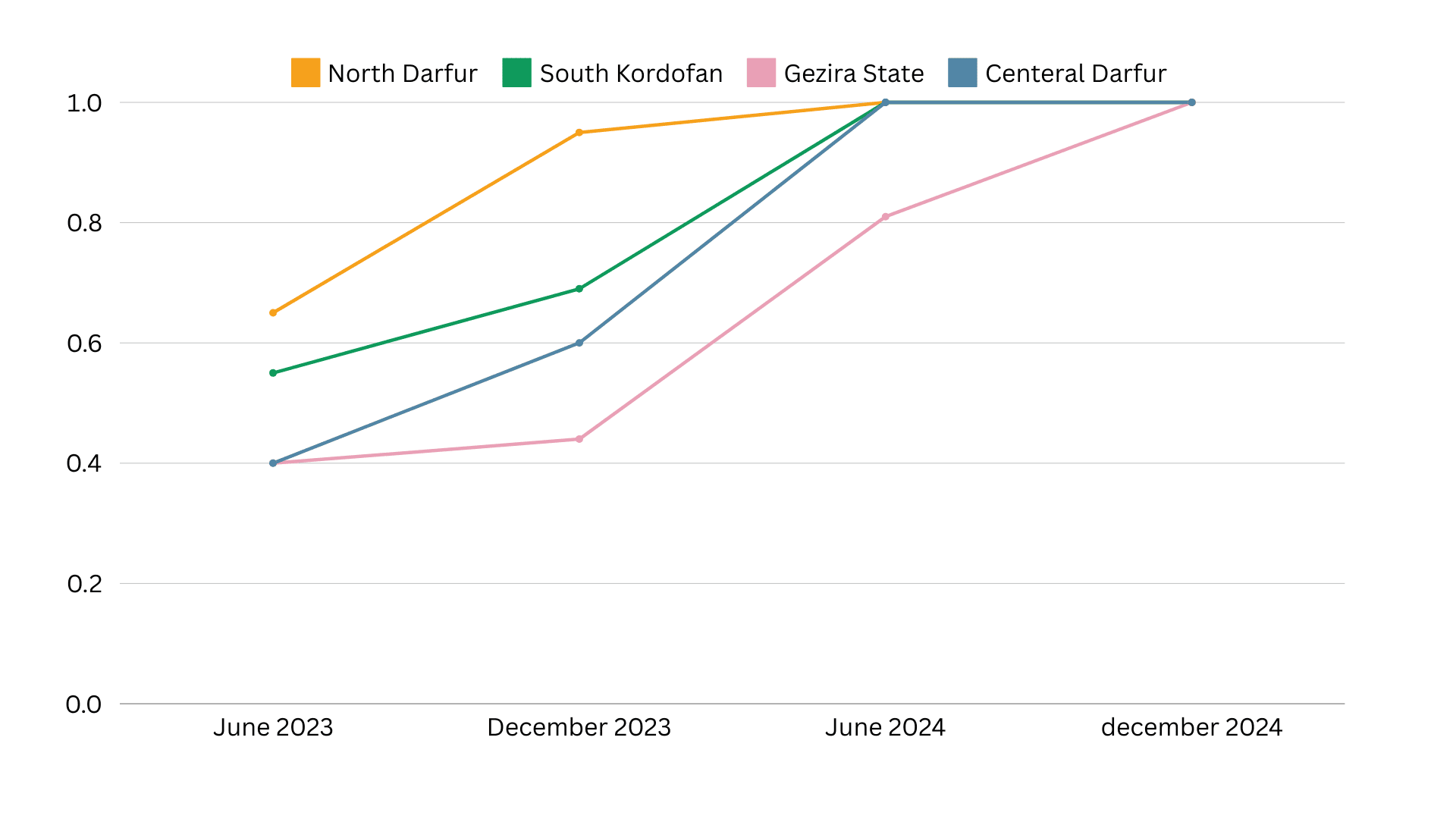As the conflict in Sudan approaches its second year, and fighting escalates in several areas, citizens continue to suffer, especially those living in conflict areas. Local communities and vital infrastructure have been severely affected, leading to an increase in the number of people facing critical food insecurity.

Here we review the impact of several factors resulting from the food shortage crisis and use a mathematical model to analyze and understand the causes of the crisis in the regions (Khartoum, Al-Geziera, Darfur, and Kordofan). We will also discuss the role of mathematical models in providing insights that contribute to analyzing humanitarian crises and finding sustainable solutions to them.
Overview of the humanitarian situation in Sudan
According to a report by the World Food Program, more than 24.6 million people in Sudan, more than half the population, suffer from severe levels of food insecurity (Phase 3 or above in the integrated food security classification). Of these, 8.1 million people are in emergency conditions (Phase 4), and at least 638,000 people have reached critical (Phase 5).

Women and children lining up for food - Source: Reuters
The current situation indicates the intersection of several complex factors, most notably ongoing conflicts, economic crises, and a severe shortage of basic services. The agricultural sector is a major source of production in the country, but the extension of fighting to the most productive states such as Al-Jazeera, Kordofan, and Darfur has plunged Sudan into a severe food crisis, potentially the worst in its history. In just one year of war, Sudan lost about 25% of its GDP, contributing to the worsening food insecurity that now affects 25.6 million people. This sharp decline has had a major impact on the food agriculture sector, which accounts for more than 34% of GDP.
The impact of food insecurity on women and children
Women and children are among the most vulnerable to the repercussions of ongoing crises. Pregnant and lactating women suffer from high levels of malnutrition as a result of ongoing conflicts, intractable economic challenges, and difficulty accessing basic needs. Recent data shows that malnutrition rates among children in Sudan have reached critical levels. In Central Darfur, an estimated 15.6% of children under five are acutely malnourished, while in Zamzam camp this figure rises alarmingly to nearly 30%, with no sign of improvement as a result of the ongoing conflict. These rates are among the highest in the world, posing a real threat to children’s lives.
More specifically, reports reveal that more than 33% of pregnant and lactating women in Zamzam camp in North Darfur are malnourished, likely as a result of their preference for feeding their children over their own needs. This phenomenon poses a serious threat not only to the health of mothers but also to the health and development of the next generation of children in Sudan, with long-term implications for the future of next generations.
Factors Affecting Population Vulnerability
Armed conflicts are estimated to be the main factor affecting around 50% of the affected population, as these conflicts pose significant challenges to accessing food. Economic conditions also exacerbate the problem, with food prices rising rapidly, making them out of reach for many people.

The proportion of the population affected by food insecurity factors
Analysis conducted by the author based on WFP figures
North Darfur: The intensity of conflicts and the lack of humanitarian access reflect a deterioration in the situation that is constantly increasing over time.
South Kordofan: There has been a gradual and moderate increase in the rate of food shortages. This indicates a less severe impact of conflicts or a relative improvement in humanitarian assistance.
Al-Geziera State: The increase in food shortages remains lower than in other regions, due to the entry of the Rapid Support Forces into Al-Gizera State at the end of 2023, reflecting the large increase in the first half of 2024 due to the intensity of clashes and the turbulent conditions witnessed in the region.
Central Darfur: A similar pattern appears in North Darfur, with a rapid increase due to the intensity of conflict and displacement.

Projected food insecurity levels by region
Analysis by author based on WFP figures

Average food insecurity levels by region (2023-2024)
Analysis conducted by the author based on WFP figures
With ongoing conflict, deteriorating conditions on the ground, and restrictions in place, the outlook is looking increasingly bleak, with an estimated 4.5 million people facing food insecurity in these areas. Reports indicate that ongoing conflict and famine is expected according to the new Integrated Food Security Phase Classification (IPC) projections in at least five areas in Sudan – Zamzam, Abu Shouk, and Al Salam camps in North Darfur, and in the Western Nuba Mountains for both residents and internally displaced persons. Famine is expected in five additional areas between December 2024 and May 2025 – Umm Kadada, Mellit, El Fasher, El Toweisha, and El Lait in North Darfur. This situation threatens to exacerbate acute malnutrition rates and escalate the humanitarian crisis in the country.